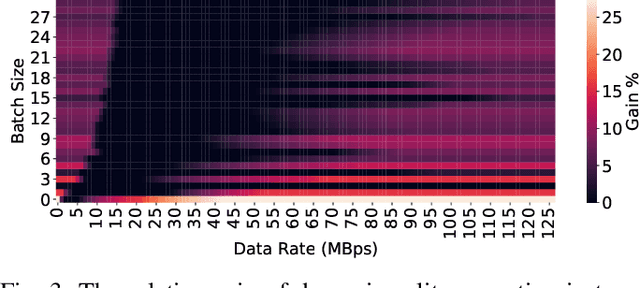Dragana Bajović
A Unified Framework for Gradient-based Clustering of Distributed Data
Feb 02, 2024



Abstract:We develop a family of distributed clustering algorithms that work over networks of users. In the proposed scenario, users contain a local dataset and communicate only with their immediate neighbours, with the aim of finding a clustering of the full, joint data. The proposed family, termed Distributed Gradient Clustering (DGC-$\mathcal{F}_\rho$), is parametrized by $\rho \geq 1$, controling the proximity of users' center estimates, with $\mathcal{F}$ determining the clustering loss. Specialized to popular clustering losses like $K$-means and Huber loss, DGC-$\mathcal{F}_\rho$ gives rise to novel distributed clustering algorithms DGC-KM$_\rho$ and DGC-HL$_\rho$, while a novel clustering loss based on the logistic function leads to DGC-LL$_\rho$. We provide a unified analysis and establish several strong results, under mild assumptions. First, the sequence of centers generated by the methods converges to a well-defined notion of fixed point, under any center initialization and value of $\rho$. Second, as $\rho$ increases, the family of fixed points produced by DGC-$\mathcal{F}_\rho$ converges to a notion of consensus fixed points. We show that consensus fixed points of DGC-$\mathcal{F}_{\rho}$ are equivalent to fixed points of gradient clustering over the full data, guaranteeing a clustering of the full data is produced. For the special case of Bregman losses, we show that our fixed points converge to the set of Lloyd points. Numerical experiments on real data confirm our theoretical findings and demonstrate strong performance of the methods.
Dynamic Split Computing for Efficient Deep Edge Intelligence
May 23, 2022


Abstract:Deploying deep neural networks (DNNs) on IoT and mobile devices is a challenging task due to their limited computational resources. Thus, demanding tasks are often entirely offloaded to edge servers which can accelerate inference, however, it also causes communication cost and evokes privacy concerns. In addition, this approach leaves the computational capacity of end devices unused. Split computing is a paradigm where a DNN is split into two sections; the first section is executed on the end device, and the output is transmitted to the edge server where the final section is executed. Here, we introduce dynamic split computing, where the optimal split location is dynamically selected based on the state of the communication channel. By using natural bottlenecks that already exist in modern DNN architectures, dynamic split computing avoids retraining and hyperparameter optimization, and does not have any negative impact on the final accuracy of DNNs. Through extensive experiments, we show that dynamic split computing achieves faster inference in edge computing environments where the data rate and server load vary over time.
 Add to Chrome
Add to Chrome Add to Firefox
Add to Firefox Add to Edge
Add to Edge